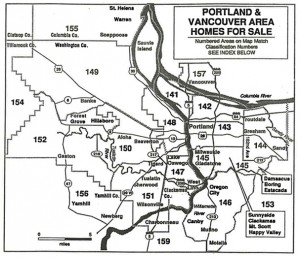![MLS Insight: RMLS™ and OREF]()
by Gail Hare | Oct 23, 2014 | RMLS News
 This post is part of MLS Insight, a series about how things work at RMLS™.
This post is part of MLS Insight, a series about how things work at RMLS™.
RMLS™ is renewing its agreement with Oregon Real Estate Forms to pay for MLS-Connect® for zipForms on behalf of the RMLS™ subscribers who use the OREF Forms. The Board of Directors approved payment of this annual fee of $3.00/OREF Forms subscriber at its meeting in October. MLS-Connect® allows for auto-population from the listing data. We recently audited the available fields, and are sending all the data that is compatible to OREF for use in this functionality.
RMLS™ and OREF are two separate entities with a history of cooperation in serving Oregon REALTORS®. From 2004 through 2010, RMLS™ provided the on-line forms software solution for OREF. The program was based on Microsoft technology, and after six years of operation, some key components were no longer available to support the software that RMLS™ had built for OREF. The REALTOR®-owned zipLogix platform was chosen by the OREF Board of Managers and was launched January 1, 2011. RMLS™ has participated in the MLS-Connect® feature from the beginning to add value for our subscribers.
Thanks to everyone who commented on the last post – Thinking About an MLS Without Area Numbers! As I stated, this is not in the works at this time, but discussion about how things might work in the future is healthy. Technology moves at a great rate, and we don’t always know where it is headed. Even just thinking about doing things in a different way keeps us mentally agile and a little more ready for whatever changes comes our way. Thanks again for participating.
I took a detour this month to tell you about OREF. Next month we will get back to talking about the various departments at RMLS™ and their plans for the upcoming year. If you have any questions you would like to have answered about how things work at RMLS™, I encourage you to post a comment to this blog.
![MLS Insight: RMLS™ and OREF]()
by Gail Hare | Oct 23, 2014 | RMLS News
 This post is part of MLS Insight, a series about how things work at RMLS™.
This post is part of MLS Insight, a series about how things work at RMLS™.
RMLS™ is renewing its agreement with Oregon Real Estate Forms to pay for MLS-Connect® for zipForms on behalf of the RMLS™ subscribers who use the OREF Forms. The Board of Directors approved payment of this annual fee of $3.00/OREF Forms subscriber at its meeting in October. MLS-Connect® allows for auto-population from the listing data. We recently audited the available fields, and are sending all the data that is compatible to OREF for use in this functionality.
RMLS™ and OREF are two separate entities with a history of cooperation in serving Oregon REALTORS®. From 2004 through 2010, RMLS™ provided the on-line forms software solution for OREF. The program was based on Microsoft technology, and after six years of operation, some key components were no longer available to support the software that RMLS™ had built for OREF. The REALTOR®-owned zipLogix platform was chosen by the OREF Board of Managers and was launched January 1, 2011. RMLS™ has participated in the MLS-Connect® feature from the beginning to add value for our subscribers.
Thanks to everyone who commented on the last post – Thinking About an MLS Without Area Numbers! As I stated, this is not in the works at this time, but discussion about how things might work in the future is healthy. Technology moves at a great rate, and we don’t always know where it is headed. Even just thinking about doing things in a different way keeps us mentally agile and a little more ready for whatever changes comes our way. Thanks again for participating.
I took a detour this month to tell you about OREF. Next month we will get back to talking about the various departments at RMLS™ and their plans for the upcoming year. If you have any questions you would like to have answered about how things work at RMLS™, I encourage you to post a comment to this blog.
![MLS Insight: RMLS™ and OREF]()
by Gail Hare | Sep 25, 2014 | RMLSweb
This post is part of MLS Insight, a series about how things work at RMLS™.
 An MLS without area numbers: this idea might strike terror in your heart….or you might say to yourself, “it’s about time!” In any case, it is not a proposal that is currently on the table, but with the changes in technology and the way people think about location, it is probably not too early to start the conversation.
An MLS without area numbers: this idea might strike terror in your heart….or you might say to yourself, “it’s about time!” In any case, it is not a proposal that is currently on the table, but with the changes in technology and the way people think about location, it is probably not too early to start the conversation.
When RMLS™ opened its doors in 1991, it was to the REALTORS® in the Portland metropolitan area in Oregon. At that time, the major advertising vehicle for homes for sale was the newspaper—The Oregonian, in our case. RMLS™ based its MLS area numbers on the map and classified ad numbers of The Oregonian. The 12 core areas for Multnomah, Clackamas, and Washington counties have remained basically unchanged for 23 years.
When regions were added, local preferences regarding area numbers were retained. Clark County, for example, is divided into more than 30 areas, while Coos County is contained in one area.
The end result is more than 200 area numbers in RMLSweb, without a common reason why each geographical area is an “Area Number.” In some cases, a single area comprises several large but dissimilar communities. In others, areas may have so few listings and sales as a sample size that few, if any, conclusions could be drawn from looking at their data. In fact, there are rural areas that had no new listings and no closed sales in all of 2013.
In the world of today, The Oregonian posts its real estate ads online and there is no search option for area numbers. GPS location services have replaced maps to a large degree. It is a very different world than the world of 1991, when there was a Thomas Brothers map in the car of virtually every REALTOR®.
Here are some things to think about:
What role do area numbers play in the life of an RMLS™ subscriber today?
Has map search replaced searching by area number? Could it?
What could replace area numbers for searching besides map search—counties? zip codes? There should be something to narrow the initial search that pertains to location.
What about Market Action and other statistical reports? (Some counties are already reported in terms of zip codes in Market Action.)
If and when we ever do move away from area numbers, we need to have a good plan to meet the needs of our subscribers. Ideas?
Thanks for voyaging into the future with me. Next month we will talk with the various departments at RMLS™ and their plans for the upcoming year. If you have any questions you would like to have answered about how things work at RMLS™, I encourage you to post a comment to this blog.
UPDATE (November 20, 2014): RMLS™ is not the only MLS engaging in this interesting discussion. Here’s an article from the Seattle Post-Intelligencer about NWMLS area numbers.
![MLS Insight: RMLS™ and OREF]()
by Gail Hare | Sep 25, 2014 | RMLSweb
This post is part of MLS Insight, a series about how things work at RMLS™.
 An MLS without area numbers: this idea might strike terror in your heart….or you might say to yourself, “it’s about time!” In any case, it is not a proposal that is currently on the table, but with the changes in technology and the way people think about location, it is probably not too early to start the conversation.
An MLS without area numbers: this idea might strike terror in your heart….or you might say to yourself, “it’s about time!” In any case, it is not a proposal that is currently on the table, but with the changes in technology and the way people think about location, it is probably not too early to start the conversation.
When RMLS™ opened its doors in 1991, it was to the REALTORS® in the Portland metropolitan area in Oregon. At that time, the major advertising vehicle for homes for sale was the newspaper—The Oregonian, in our case. RMLS™ based its MLS area numbers on the map and classified ad numbers of The Oregonian. The 12 core areas for Multnomah, Clackamas, and Washington counties have remained basically unchanged for 23 years.
When regions were added, local preferences regarding area numbers were retained. Clark County, for example, is divided into more than 30 areas, while Coos County is contained in one area.
The end result is more than 200 area numbers in RMLSweb, without a common reason why each geographical area is an “Area Number.” In some cases, a single area comprises several large but dissimilar communities. In others, areas may have so few listings and sales as a sample size that few, if any, conclusions could be drawn from looking at their data. In fact, there are rural areas that had no new listings and no closed sales in all of 2013.
In the world of today, The Oregonian posts its real estate ads online and there is no search option for area numbers. GPS location services have replaced maps to a large degree. It is a very different world than the world of 1991, when there was a Thomas Brothers map in the car of virtually every REALTOR®.
Here are some things to think about:
What role do area numbers play in the life of an RMLS™ subscriber today?
Has map search replaced searching by area number? Could it?
What could replace area numbers for searching besides map search—counties? zip codes? There should be something to narrow the initial search that pertains to location.
What about Market Action and other statistical reports? (Some counties are already reported in terms of zip codes in Market Action.)
If and when we ever do move away from area numbers, we need to have a good plan to meet the needs of our subscribers. Ideas?
Thanks for voyaging into the future with me. Next month we will talk with the various departments at RMLS™ and their plans for the upcoming year. If you have any questions you would like to have answered about how things work at RMLS™, I encourage you to post a comment to this blog.
UPDATE (November 20, 2014): RMLS™ is not the only MLS engaging in this interesting discussion. Here’s an article from the Seattle Post-Intelligencer about NWMLS area numbers.
![MLS Insight: RMLS™ and OREF]()
by Gail Hare | Aug 7, 2014 | RMLS News

RMLS™ is very pleased to extend service to a new area! Beginning Tuesday, August 12th, RMLSweb will contain the converted listing content of Grants Pass MLS (GPMLS), and will provide service from the Grants Pass Association of REALTORS® office at 525 NE 7th Street (above) in beautiful Grants Pass.
Both Josephine and Jackson County, previously areas 280 and 290, will have multiple new area numbers. Josephine County areas will start with 620 and Jackson County will start with 719.
 This post is part of MLS Insight, a series about how things work at RMLS™.
This post is part of MLS Insight, a series about how things work at RMLS™.
